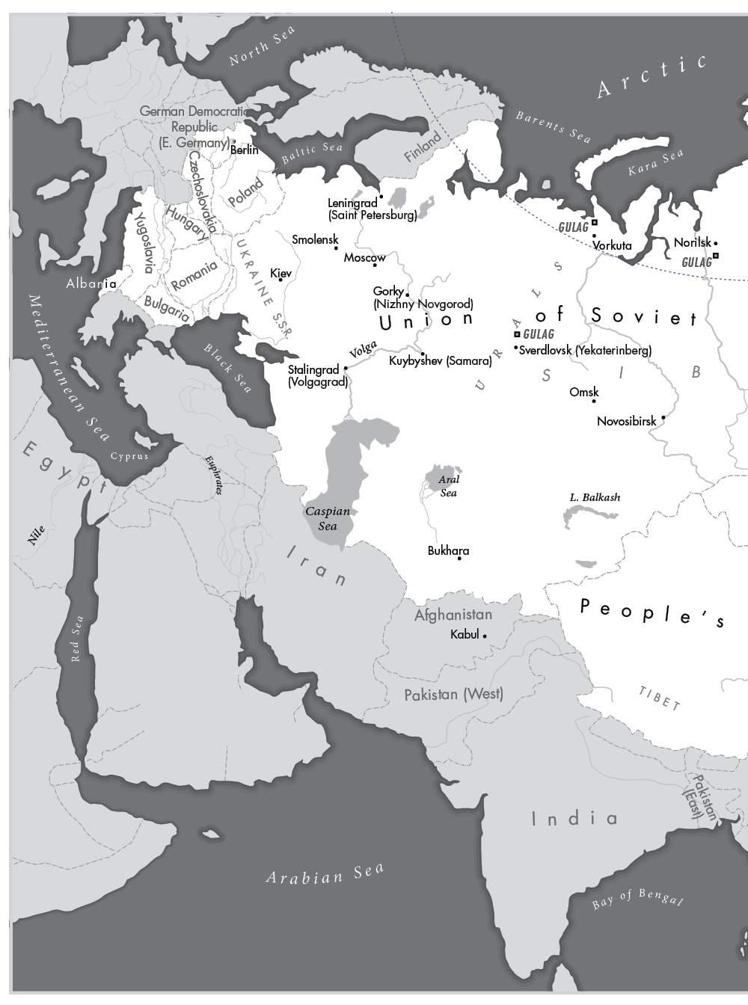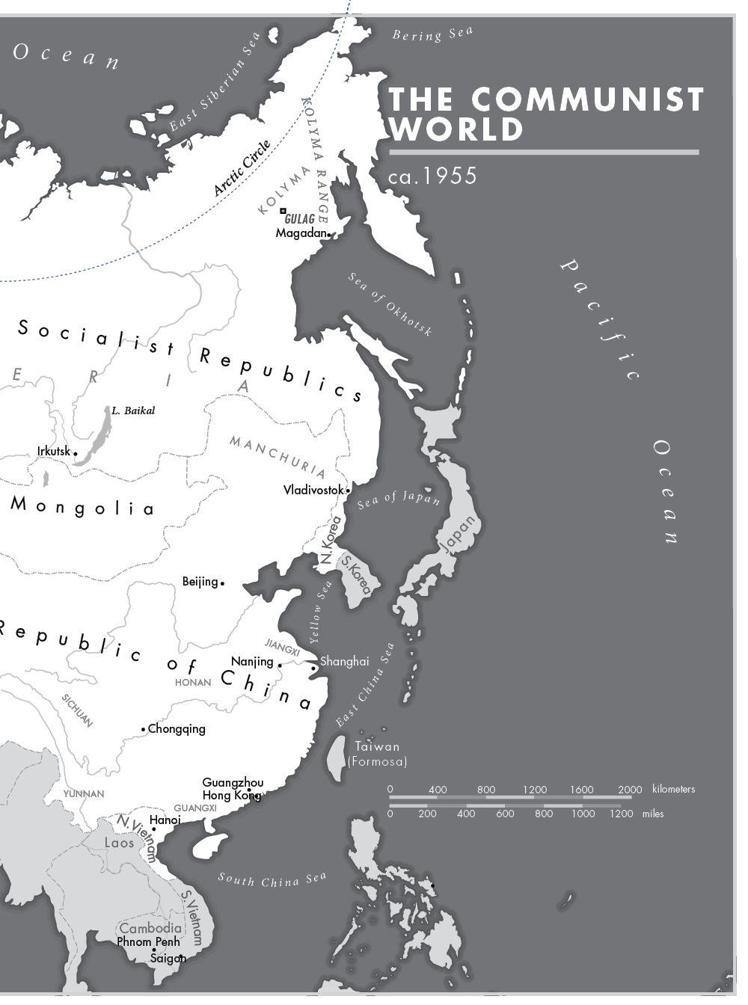The Great Big Book of Horrible Things: The Definitive Chronicle of History's 100 Worst Atrocities (80 page)
Authors: Matthew White

North Korea began to pursue nuclear weapons in the mid-1950s, but it was too backward to make much headway quickly; however, persistence paid off, and by the 1990s the North Koreans were closing in on success. Faced with the prospect of yet another insane nuclear power in the world, American President Bill Clinton bought off Kim in 1994. Vital food and fuel imports were sent in exchange for a halt to nuclear activities. The crisis fizzled out, and the world sighed in relief until 2002, when the next American president, George Bush (the younger), took a hard line and cut these subsidies. Kim immediately resumed his nuclear ambitions. Washington thought North Korea was either bluffing or overreaching and largely ignored the threat. After a few years of insisting that they were going to do it—no kidding, they meant it this time—North Korea tested something in 2006 that made a big boom—probably a nuclear weapon, although the evidence is disputed. A more convincing explosion occurred in 2009.


THE BLACK CHAPTER OF COMMUNISM

N
EVER TRUST ANYONE WHO ARGUES AGAINST COMMUNISM ON THEORY.
Here we have one of the greatest social experiments in history failing spectacularly, yet instead of using the obvious, scientific proof that we tried Communism and it doesn’t work, some people want to take the long way around and argue property rights and theories of ownership. They obviously don’t care whether Communism worked or not; it’s the theory of Communism that bothers them, and they’d argue against it even if it had worked perfectly.
So it failed. Is that really a big deal? Dinosaurs and Rome failed, but they flourished successfully far longer than most other species and institutions hope for. Communism lasted longer than fascism, jazz, John Wayne,
Bonanza
, and the American Motors Corporation. Unfortunately, the problem with Communism isn’t the mere failure to last forever. The bigger problem is that every Communist regime in history killed huge numbers of its own people. If history had seen only one or two nasty people’s republics amid a few decent ones, I might accept that a few bad apples gave the whole movement a bad name, but when death and destruction have followed every single Communist regime ever established, there would seem to be a flaw somewhere in the system.
*
Generally speaking, there were five waves of mass killing associated with a Communist regime:
1
. It began with a civil war during which Marxist rebels wrested control from a brutal, authoritarian regime. During this first stage of regime change, the Communists were usually preferable to the status quo. They educated. They shared. They provided free medical care. They dispensed real and fair justice when arbitrating disputes. Meanwhile, the dictators they were trying to overthrow were plundering, raping, and selling justice to the highest bidder.
It’s worth noting that Communism, unlike fascism, strict Sharia, and other forms of oppression, has never taken over a free democracy. Voting seems to immunize a society against Communism.
•
Russian Civil War (1918–22): 9,000,000 deaths
•
Chinese Civil War (1927–49): 7,000,000
•
Vietnam War (1959–75): 3,500,000 in Vietnam
•
Yugoslavia (part of World War II, 1940–45) 1,400,000
•
Cambodian Civil War (1970–75): 600,000
•
Nicaragua (1972–79): 30,000
•
Cuba (1955–59): 5,000
•
Rough total: 21 million
2.
After the Communist victory, the new bosses executed the power base of the old regime.
•
China (1950–53): 2,000,000
•
Cambodia (1975): 400,000 outright executions
1
•
Yugoslavia (1945) 175,000
2
•
Russia (1918–22): 100,000 executions during the Russian Civil War
•
Vietnam (after 1975): 65,000
•
Mongolia (1936–38): 35,000
•
Poland: 30,000
3
•
Bulgaria: 20,000
4
•
Cuba (1959–60): 5,000
5
•
Rough total: 3 million
3.
This was eventually followed by a redistribution of the land, relocation of the people, and restructuring of the economy, which usually turned out to be a big mistake and led to mass starvation.
•
China (Great Leap Forward, 1959–62): 30,000,000 famine deaths
•
Soviet Union (1932–33): 7,000,000
•
Korea (1995–98): 2,000,000
•
Ethiopia: 1,000,000
•
Cambodia (1975–79): 800,000
6
•
Rough total: 41 million
4.
Then the Communist Party turned on itself, purged the moderates, and focused power into the hands of a single dictator.
•
Russia (Great Purge, 1934–38): 7,000,000
•
China (Cultural Revolution, 1966–69): 1,000,000
•
North Korea (intermittent purges): 100,000
7
•
Ethiopia (Red Terror): 80,000
•
Rough total: 8 million
5.
As Communist regimes came to power in more countries—particularly in the 1970s—the tables turned, and the world witnessed the outbreak of anti-Communist insurgencies, which would have been considered an oxymoron twenty years earlier.
•
Afghanistan (1979–89): 1,500,000
•
Mozambique (1975–92): 800,000
•
Angola (1975–2002): 600,000
•
Nicaragua (1981–90): 30,000
•
Hungary (1956): 5,000
•
Rough total: 3 million
After the purges had run their course and the first generation of ideologues died off, the average Communist regime settled into a sluggish, corrupt bureaucracy, which slowly loosened its grip on the people and eventually surrendered power without a fight.
Not every Communist regime went through these five stages. Some had simpler histories, and some more complicated. In all regimes, there was also a persistent background level of dying in labor camps and prisons. For those who prefer totals broken down by country, here are reasonable estimates for the number of people who died under Communist regimes from execution, labor camps, famine, ethnic cleansing, and desperate flight in leaky boats:
•
China: 40,000,000
•
Soviet Union: 20,000,000
•
North Korea: 3,000,000
•
Ethiopia: 2,000,000
•
Cambodia: 1,700,000
•
Vietnam: 365,000 (after 1975)
•
Yugoslavia: 175,000
•
East Germany: 100,000
8
•
Romania: 100,000
9
•
North Vietnam: 50,000 (internally, 1954–75)
•
Cuba: 50,000
•
Mongolia: 35,000
10
•
Poland: 30,000
•
Bulgaria: 20,000
•
Czechoslovakia: 11,000
11
•
Albania: 5,000
12
•
Hungary: 5,000
•
Rough total: 70 million
(This rough total doesn’t include the 20 million killed in the civil wars that brought Communists into power, or the 11 million who died in the proxy wars of the Cold War. Both sides probably share the blame for these to a certain extent. These two categories overlap somewhat, so once the duplicates are weeded out, it seems that some 26 million people died in Communist-inspired wars.)
Considering that the aggregate death toll from Communism probably exceeds the total for World War II, you may wonder why I don’t list Communism as Number 1 in my list of horrible things. Mostly it’s because I consider each regime unique, and the whole Communist movement is too broad to be counted as one event. If I bundle all Communist regimes together to make a new Number 1, I would have to drop my individual chapters on Mao, Stalin, Pol Pot, and Kim Il-sung.
The End
Contrasting with the abysmal Communist failures in agriculture was its general success in heavy industry. During the era of big manufacturing economies, when the modern world revolved around gigantic projects like dams, power plants, coal mines, and steel mills, the Communists easily mobilized enough labor and resources to catch up with the rich countries of the West. This meant that the urbanites lucky enough to survive the purges and famines found their standards of living and life expectancies steadily improving.
13
However, once the necessities of life were provided, centrally planned economies proved too inflexible to predict and fulfill the fickle demands for consumer goods. Wasteful surpluses, shoddiness, and shortages resulted. Constant scarcities meant that only the well-connected could acquire goods and services. This bred resentment and cynicism in a system that was supposed to be based on idealism and solidarity. The collapse of Communism was delayed almost a decade because oil exports from the Soviet Union pumped hard cash from the West into the Russian economy after oil prices shot up in the 1970s, but eventually even that wasn’t enough. As soon as reformers allowed the people to choose the system they preferred, no one chose to keep the status quo.
14